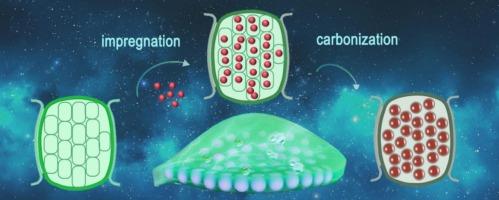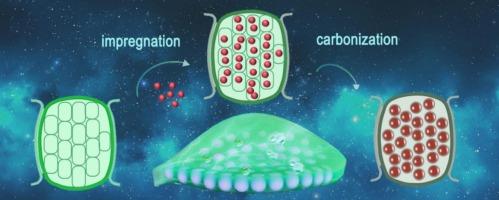碳包覆金属纳米粒子对析氧反应的空间约束效应
IF 6.9
2区 材料科学
Q2 CHEMISTRY, PHYSICAL
引用次数: 0
摘要
空间约束效应可以改变催化剂的结构、尺寸和原子利用率,从而提高催化剂的效率。本文基于茶树细胞壁空间约束效应,制备了粒径可控、原子利用可控的碳层包覆Co纳米粒子(Co@TC)。利用约束效应,通过改变溶液浓度来调节Co纳米颗粒的生长形式。随着溶液浓度的增加,Co纳米颗粒的生长形式由经典的成核转变为组装和合并。粒径适中、分布均匀的Co@TC-0.4具有较高的原子利用率。碳涂层保护Co活性部位免受腐蚀,确保长期稳定性。碳层与Co纳米颗粒之间的界面耦合效应诱导了快速电子转移,从而增强了导电性能。在界面处发生电子重分布,调节了Co@TC的电子结构,提高了OER的催化活性。空间约束效应对催化剂电子结构和几何结构的影响为提高催化剂的原子利用率提供了有价值的指导。本文章由计算机程序翻译,如有差异,请以英文原文为准。


Space confinement effect of carbon coated metal nanoparticle on oxygen evolution reaction
The spatial confinement effect can alter the structure, size, and atomic utilization of catalysts, enhancing their efficiency. Herein, based on the tea plant cell wall spatial confinement effect, carbon layer coated Co nanoparticle (Co@TC) was prepared with controllable particle size and atomic utilization. The growth form of Co nanoparticles was modulated by altering the solution concentration, utilizing the confinement effect. As the solution concentration increased, the growth form of Co nanoparticles shifted from classical nucleation to assembly and merging. The [email protected] with the moderate particle size and uniform distribution exhibited high atomic utilization. The carbon coating protected the Co active sites from corrosion, ensuring long-term stability. The interfacial coupling effect between carbon layer and Co nanoparticles induced the fast electron transfer for enhanced conductivity. Electron redistribution occurred at the interface and regulated the electronic structure of Co@TC, improving the OER catalytic activity. The spatial confinement effect on the electronic and geometric structures of catalysts provided valuable guidance for enhancing atomic utilization.
求助全文
通过发布文献求助,成功后即可免费获取论文全文。
去求助
来源期刊

Applied Surface Science
工程技术-材料科学:膜
CiteScore
12.50
自引率
7.50%
发文量
3393
审稿时长
67 days
期刊介绍:
Applied Surface Science covers topics contributing to a better understanding of surfaces, interfaces, nanostructures and their applications. The journal is concerned with scientific research on the atomic and molecular level of material properties determined with specific surface analytical techniques and/or computational methods, as well as the processing of such structures.
 求助内容:
求助内容: 应助结果提醒方式:
应助结果提醒方式:


